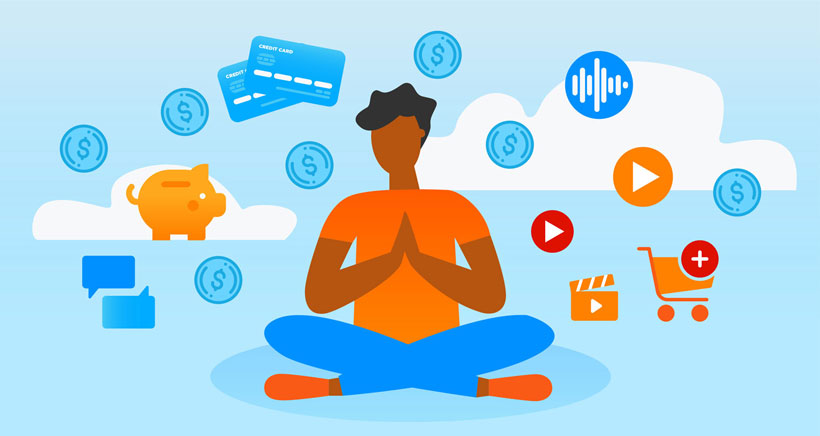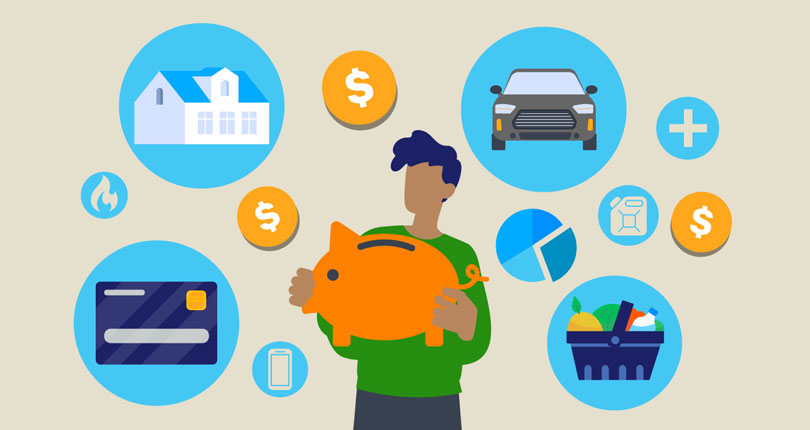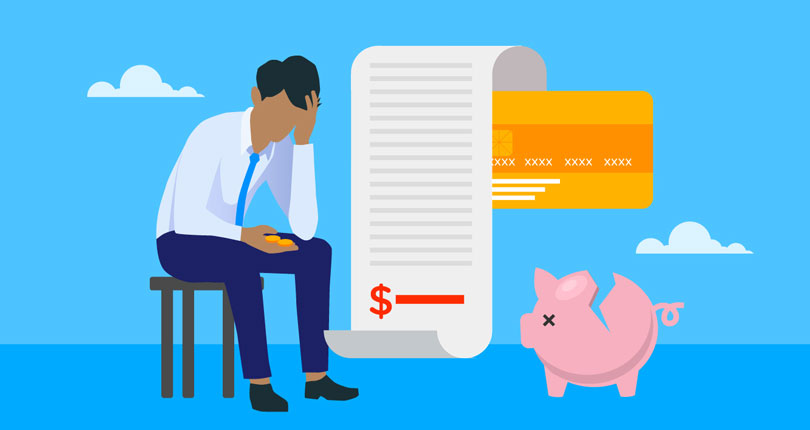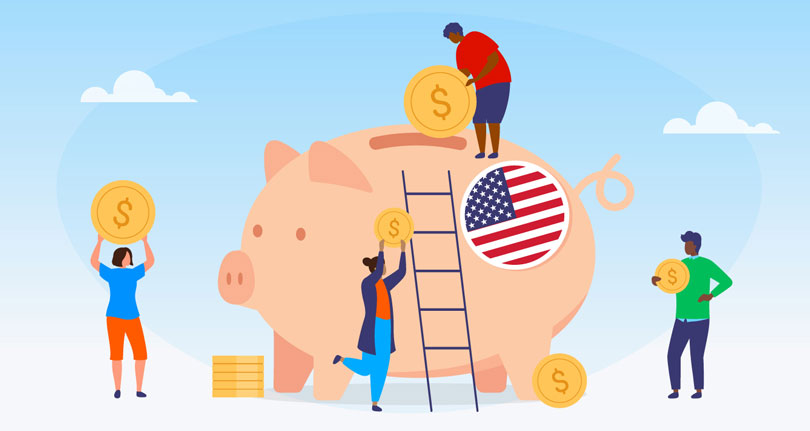Americans' Mental Health and Personal Spending Report 2023
Figures from the National Institute of Mental Health estimate in 2021 that 1 in 5 Americans suffer from some form of mental health issue, this number rises to over a third in those aged 18-25. [1] National Institute of Mental Health, ‘Mental Illness’ https://www.nimh.nih.gov/health/statistics/mental-illness.shtml Many suffer silently, therefore the figure could sadly be vastly higher.
In the U.S., mental health accounted for 5.5% of health spending in 2019. [2] Open Minds, ‘The U.S. Mental Health Market: $225.1 Billion In Spending In 2019: An OPEN MINDS Market Intelligence Report’ https://openminds.com/intelligence-report/the-u-s-mental-health-market-225-1-billion-in-spending-in-2019-an-open-minds-market-intelligence-report/ To gain a wider understanding of what individuals spend on mental wellbeing for themselves, and what people prioritize their spending on to stay healthy, both directly and indirectly a survey on behalf of Self Financial was conducted.
This study is designed to build on the survey previously conducted in 2020 on behalf of Self Financial, to establish how attitudes and financial spend towards mental health have changed over the past three years.
The following are some of the key statistics the results uncovered from the 2023 survey of over 1,000 Americans. Full findings can be found below.
Key findings
- Counseling is the most popular mental health service at 69.9%, with 38.7% of those preferring in-person counseling, while the remaining 31.2% prefer online counseling sessions.
- People are spending an average of $374.95 per month on their mental health, a 30.6% increase of $87.95 from $287 in 2020.
- 73.1% stated that they feel emotionally stressed.
- 89.4% of Americans emotionally spend in some form.
- The average emotional spend purchase is $62.55.
- 58.8% have suffered from anxiety, 45.1% struggled with depression and 35.4% have insomnia episodes due to money worries.
Inflation and financial mental wellbeing
- A third (35%) say their mental health has been negatively affected by the impact of inflation on their finances.
- 7 in 10 (71%) said that they spend less on their mental health due to inflation affecting their finances.
- Those spending more on alcohol this past year due to financial stress, spent an average of $57.33 extra compared to 2020.
Direct cost of mental health
The survey on behalf of Self Financial asked respondents to discuss the amount they spend on direct and indirect methods that help with their mental health.
The following is a breakdown of which direct methods people have used to improve their mental wellbeing. Respondents were given the option to select more than one service they currently use. Definitions of ‘direct’ and ‘indirect’ were dictated by the researchers who undertook this survey.
| Top direct mental health services |
| Rank |
Service |
Percentage of respondents |
| 1 |
Counseling in person |
38.7% |
| 2 |
Mindfulness apps |
38.3% |
| 3 |
Sports and exercise |
37.0% |
| 4 |
Self help books |
32.7% |
| 5 |
Therapy in person |
32.6% |
| 6 |
Counseling online |
31.2% |
| 7 |
Visit mental health clinics |
24.1% |
| 8 |
Therapy online |
23.3% |
| 9 |
Mental health podcasts |
22.4% |
| 10 |
Other not stated |
9.6% |
Almost 2 in 5 (38.7%) said they had tried counseling in person, while 31.2% had tried this online. Other than in-person counseling, mindfulness apps were the second most-common option to help with mental health, using methods like guided meditation and self reflection alongside a range of techniques.
According to Mental Health Match, counseling focuses on a specific issue for a limited amount of time, while therapy can be more long-term. It focuses on you as an individual and can address things such as how you see yourself and the world, your thoughts, and your behaviors, as well as the underlying patterns of why you do the things you do. [3] Mental Health Match, ‘ What is the difference between therapy and counseling?’ https://mentalhealthmatch.com/articles/about-therapy-and-mental-health/what-is-the-difference-between-therapy-and-counseling#:~:text=Usually%2C%20counseling%20focuses%20on%20a,do%20the%20things%20you%20do
The average amount spent on paid mindfulness apps was reported to be $21.13 per month. To put this amount into context, apps like Headspace cost $12.99 a month, and Calm $14.99 a month, in April 2023. [4] Healthline, ‘Headspace vs. Calm: How Do These Meditation Apps Compare?’ https://www.healthline.com/health/headspace-vs-calm It may be that households are opting to go for multiple mindfulness subscriptions, various free trials, or family plans which cost an average of $99.99 per year. These apps are gaining popularity each year, with Calm hosting celebrities on the platform like Harry Styles, Tom Hanks, Kate Winslet and Chris Hemsworth. [5] Hello! ‘21 best celebrity sleep stories to help you fall asleep faster’ https://www.hellomagazine.com/healthandbeauty/health-and-fitness/20211025124792/best-sleep-stories/
Respondents also revealed that the average amount spent each month on therapy and/or counseling, was $208.93. Separate data from Good Therapy, who provide support for those seeking information on therapists and counselors, rehab and residential treatment centers, and mental health resources, shows that therapy sessions typically cost between $100-$200, so respondents in this survey are possibly only having two sessions a month to keep it affordable. [6] GoodTherapy, ‘How Much Does Therapy Cost? https://www.goodtherapy.org/blog/faq/how-much-does-therapy-cost
When asked how much was spent on physical well being each month, the average amount was found to be $43.94, accounting for things like gym memberships, supplements and personal trainers.
The cost of maintaining physical health
Physical health has a direct benefit on mental health. [7] Health, ‘Does Exercise Boost Your Immune System?’ https://www.health.com/fitness/does-exercise-boost-immunity While some may exercise to build and maintain their physical health, the activity can be just as beneficial to their mental health too.
With that in mind the survey asked how much people spend on average each month to maintain their physical health.
The average spend was shown to be $43.94 across all respondents. If this figure remains the same year round this would give an average annual spend of $527.28. To contextualize this further, studies show that it costs an average of $50.03 a month for an in-person gym membership, or $600.41 per year. [8] StrongHomeGym, ‘Average Gym Membership Costs $50.03 per Month’ https://stronghomegym.com/average-gym-membership-costs/
Indirect cost of mental health
While doctors recommend therapy, counseling and exercise, many find their mental health improves with various ‘indirect’ methods. [9] Medical News Today, Is exercise more effective than medication for depression and anxiety?’’ https://www.medicalnewstoday.com/articles/is-exercise-more-effective-than-medication-for-depression-and-anxiety#Treating-without-medication The survey asked respondents which of the below methods they used for the goal of assisting their mental health, with the option to select multiple services. The following shows the results.
| Top indirect mental health services |
| Rank |
Service |
Percentage of respondents |
| 1 |
Arts and crafts |
51.6% |
| 2 |
Vacations |
49.8% |
| 3 |
Pets |
48.2% |
| 4 |
Socializing with friends |
47.3% |
| 5 |
Food & drink |
46.1% |
| 6 |
TV/movie services |
46.0% |
| 7 |
Journals (physical or electronic) |
42.1% |
| 8 |
Music streaming or downloads |
39.6% |
| 9 |
Other |
6.9% |
Arts and crafts products are the most used (51.6%) indirect method to take care of mental health, followed by vacations (49.8%) and pets (48.2%).
When asked how much people spend on average for these indirect items, $67.15 per month was found to be the average. This was separate to the $932.76 average that respondents claimed they spend on vacations per year. This average cost here should be understood as any vacation length, for example, a long weekend or a full week away could be at either end of the scale.
Taking care of your mental health costs $374.95 a month
Where did this figure come from? The average of $374.95 a month is made up of a mix of spending on things that directly impact your mental health and indirectly improve your wellbeing according to the survey respondents.
This is not inclusive of reported monthly medicine bills ($50.43) or physical health payments, like gym memberships, exercise gear, or supplements, for example ($43.94).
If you were to add direct costs, indirect costs, vacations, physical health and medicinal costs, the monthly spend on mental health for the average American could be anywhere up to $469.32, that’s an average of $5,631.84 per year.
The below chart shows the budget split for someone who engaged with all aspects of mental health spending.
| What do people spend on their mental health |
| Service |
Average monthly spend |
Percentage of respondents |
| Therapy |
$208.94 |
44.5% |
| Indirect |
$67.15 |
14.3% |
| Vacations |
$77.73 |
16.6% |
| Medicine |
$50.43 |
10.7% |
| Physical |
$43.94 |
9.4% |
| Apps |
$21.13 |
4.5% |
The cost of therapy
With Americans spending almost $208.93 per month on average on therapy or counseling, the survey was designed to find out how this fits into a wider public understanding of therapy. The survey on behalf of Self Financial asked respondents if therapy was cheaper, would they pay for it and undertake therapy sessions on a regular basis.
While the majority, (53.9%), said that they wouldn’t attend therapy or counseling sessions if they were cheaper, nearly half, (46.11%) said that they would. This could indicate there is the desire for such services but typically high prices put people off from prioritizing their mental health.
| Would you pay for therapy if it was cheaper? |
| Reponse |
Percentage of respondents |
| Yes |
46.1% |
| No |
53.9% |
Data from Thervoe suggests that therapy is, on average, $60 to $120 an hour across the U.S. [10] Thervo, ‘How much does therapy cost?’ https://thervo.com/costs/how-much-does-therapy-cost With that in mind, therapists with lower rates may not be as out of reach to the average consumer as many may think. With reduced costs of online therapy providers, which only 23.2% of respondents said they had tried, there may be an option here many are not aware of.
Emotional spending statistics
Emotional spending can take various forms, but it generally tends to be when people are feeling stressed or unhappy and they buy things they don’t need or even want.
The survey on behalf of Self Financial asked respondents if they engage in any habits, which would fall under the spectrum of emotional spending, to discover how often people’s feelings intertwine with their financial wellbeing. The below shows the most popular methods that respondents chose, given the option to select more than one.
| How do people emotionally spend? |
| Rank |
Method |
Percentage of respondents |
| 1 |
Buy a new product to feel happier |
54.2% |
| 2 |
Browsing stores (online/in-person) to escape |
50.4% |
| 3 |
Purchase a product to compete with someone |
31.7% |
| 4 |
Regret buying something on an impulse |
31.5% |
| 5 |
Spend money when stressed about money |
31.0% |
| 6 |
Buy new things to change your identity |
28.9% |
| 7 |
Buy new things when bored |
25.2% |
| 8 |
Spend more money when feeling upset or in a low mood |
23.8% |
| 9 |
Hide purchases from friends and family |
20.1% |
| 10 |
None of the above |
13.7% |
89.4% of our respondents said they emotionally spend in some capacity, a 16.1% increase from 77% in 2020.
The majority of those surveyed in 2023 (54.2%) stated that they buy new products purely to feel happier. The second most frequent (50.4%) behavior associated with emotional spending was browsing stores in store or online to escape, followed by 31.7% purchasing a product to compete with someone.
A further 31.5% experienced feelings of regret on impulse purchases. Emotional spending can take other forms, but these are some of the most common.
When asked how much people spend on purchases of this type every month, the results showed that the average was $62.55. If the average person emotionally spent once every month, this would amount to just over $750 ($750.63) each year.
Financial stress and mental health
When asked if having control of money helps people improve their mental health, the majority (85.8%) agreed, followed by 6.2% who said no. The remaining 8% were unsure either way.
| Do you think having control of your money is linked to positive mental health? |
| Outcome |
Percentage of respondents |
| Yes |
85.8% |
| No |
6.2% |
| Not sure |
8.0% |
People have their own ways of dealing with finances in a bid to ensure they take care of their mental health. Naturally, this can take a variety of forms.
Taking some of the most popular mechanisms consumers use to manage their financial wellbeing, the survey asked respondents which they use regularly, with the option to choose multiple methods. The below methods were chosen to be common.
| Which of the following have you done to assist in your mental health? |
| Outcome |
Percentage of respondents |
Percentage of respondents in 2020 |
Change since 2020 |
| Created a budgeting spreadsheet |
48.2% |
41.60% |
15.87% |
| Avoid looking at bank statements |
38.5% |
25.30% |
52.20% |
| Hidden away physical money |
28.1% |
21.10% |
33.20% |
| Cut up credit cards |
28.0% |
23.60% |
18.64% |
| Asked banks for spending freezes |
27.7% |
13.80% |
100.7% |
| None of the above |
20.0% |
27.70% |
-27.8% |
| Ask another person to control your finances |
16.7% |
11.30% |
47.80% |
Overall, the most simple and effective method was the most popular, with 48.2% of people creating a budgeting spreadsheet to prevent them from spending, a 15.87% increase from 41.6% in 2020.
This was followed by 38.5% avoiding looking at bank statements, and 28.1% choosing to hide notes and coins away in a bid to forget about them and save.
A further 28.1% cut up cards to stop them using them, and 27.7% asked banks for spending freezes, this marked the biggest increase since 2020 with a 100.7% increase in the activity. Lastly, 16.7% said they had asked another person to control their finances on their behalf to help assist their mental health.
Our Head of Community, Monique White, has the following three tips people should use to find some small ways to improve their financial wellbeing.
- Recruit a community to encourage and hold you accountable along the way when tackling your debt head on. Just like you might have a more successful physical fitness journey if you have a workout buddy, or a more successful mental wellness journey with the support of a counselor, you’ll probably have a more successful financial health journey with the support and guidance of others too.
- Make a list of last month’s expenses. Separate that list into needs, like food, shelter and basic transportation, and wants, like subscriptions, eating out, etc. Look over everything on your “wants” list and notice if anything surprises you, and if you’re spending money on things you don’t truly want or need.
- When it comes to saving money on food, the best place to start grocery shopping is in your pantry at home. People generally have much more food shoved in the back of the pantry than they realize. By getting creative with what you already have, and Googling some recipes based on those ingredients, you might be surprised how much longer you can wait until you need to go to the grocery store.
Mental health issues due to finances
The survey on behalf of Self Financial asked respondents if they would describe themselves as financially stressed, with 73.1% admitting that they would.
To discover more about the mental health issues caused by money stress the survey asked which, if any, people had experienced. The below chart shows the most common answers that respondents selected when given the choice to select those that they were experiencing. The full results can be found in the chart below.
| Year |
Average VantageScore - AZ |
| Which of these have you encountered due to money stress? |
| Outcome |
Percentage of respondents in 2023 |
Percentage of respondents in 2020 |
Change since 2020 |
| Anxiety |
58.8% |
52.6% |
11.79% |
| Depression |
45.1% |
40.7% |
10.8% |
| Insomnia |
35.4% |
34.1% |
3.81% |
| Stomach and bowel problems |
28.8% |
21.7% |
32.70% |
| Panic attacks |
27.5% |
20.8% |
32.2% |
Of those that have encountered mental health issues as a result of money worries, over half (58.8%) said they had experienced anxiety due to financial stress, a 11.79% increase since 2020, with 45.1% suffering from depression as a direct result of money worries. That’s a 10.8% increase from 40.7% when the survey was last run in 2020.
A further 35.4% struggled with insomnia due to financial stress, a 3.81% increase from 2020, with 28.8% saying they have experienced stomach and bowel problems, a 32.7% increase from 2020, and 27.5% suffering from panic attacks due to money woes. This figure has risen by 32.2% since 2020.
It should be noted that these conditions are self reported and the survey did not require proof of illness, or ask if they were medically verified.
Mental health post-pandemic
Keen to discover how spending on mental health had changed since pandemic restrictions eased, the survey asked respondents if the amount they spent on mental health products changed at all.
| How has your spending on mental health products been since pandemic restrictions were eased? |
| Outcome |
Percentage of respondents |
| Increased |
49.1% |
| Decreased |
17.6% |
| Stayed the same |
33.3% |
Nearly half (49.1%) said they spend more on their mental health since restrictions were lifted, with 33.3% saying they spent the same, and only 17.6% spending less on mental health products.
Wellbeing, finances, and inflation
While the survey asked respondents to consider previous questions in relation to their life post-pandemic, it also was designed to assess the impact inflation had on their financial and mental wellbeing.
The majority of those surveyed (86.9%) agreed that mental health is just as important as physical health.
A third (35%) said that their mental health has been negatively impacted by the effect of inflation on their finances.
Seven in ten (71%) said that their spending on mental health has decreased due to the impact of inflation on their finances.
| Has your spending on mental health products decreased due to inflation rates? |
| Outcome |
Percentage of respondents |
| Yes |
71% |
| No |
29% |
Of those who said they have spent more on alcohol this past year due to financial stress, most spent an average of $57.33 extra this year.
Methodology
The survey was conducted on 1,137 Americans from a range of financial backgrounds between January 26 and 29, 2023.
The demographic breakdown of respondents is as follows.
Gender:
- Female 57.6%
- Male 41.2%
- Non-binary 0.8%
- Prefer not to disclose 0.4%
Age:
- 18-24 7.5%
- 25-34 47.9%
- 35-44 23.6%
- 45-54 12.0%
- 55-64 6.9%
- 65+ 2.1%
To establish how American’s personal finances were being impacted by their mental health, the survey conducted on behalf of Self Financial asked a number of questions related to free and mental health services, which have both a direct and indirect impact on their wellbeing.
Sources
- [1] National Institute of Mental Health, ‘Mental Illness’ https://www.nimh.nih.gov/health/statistics/mental-illness.shtml
- [2] Open Minds, ‘The U.S. Mental Health Market: $225.1 Billion In Spending In 2019: An OPEN MINDS Market Intelligence Report’ https://openminds.com/intelligence-report/the-u-s-mental-health-market-225-1-billion-in-spending-in-2019-an-open-minds-market-intelligence-report/
- [3] Mental Health Match, ‘ What is the difference between therapy and counseling?’ https://mentalhealthmatch.com/articles/about-therapy-and-mental-health/what-is-the-difference-between-therapy-and-counseling#:~:text=Usually%2C%20counseling%20focuses%20on%20a,do%20the%20things%20you%20do
- [4] Healthline, ‘Headspace vs. Calm: How Do These Meditation Apps Compare?’ https://www.healthline.com/health/headspace-vs-calm
- [5] Hello! ‘21 best celebrity sleep stories to help you fall asleep faster’ https://www.hellomagazine.com/healthandbeauty/health-and-fitness/20211025124792/best-sleep-stories/
- [6] GoodTherapy, ‘How Much Does Therapy Cost? https://www.goodtherapy.org/blog/faq/how-much-does-therapy-cost
- [7] Health, ‘Does Exercise Boost Your Immune System?’ https://www.health.com/fitness/does-exercise-boost-immunity
- [8] StrongHomeGym, ‘Average Gym Membership Costs $50.03 per Month’ https://stronghomegym.com/average-gym-membership-costs/
- [9] Medical News Today, Is exercise more effective than medication for depression and anxiety?’’ https://www.medicalnewstoday.com/articles/is-exercise-more-effective-than-medication-for-depression-and-anxiety#Treating-without-medication
- [10] Thervo, ‘How much does therapy cost?’ https://thervo.com/costs/how-much-does-therapy-cost






